"Efficient" use of solar for home heating and car charging
Since I recently purchase a PHEV (plug-in electric vehicle), I was thinking about installing solar panels for charging it. Solar panel installation can be very complicated, but since I'm not trying to replace the utility electric service, it should be easy. My PHEV charger uses 8 or 12 Amps at 110 volt, so that's about 1000 or 1400 watts maximum. Since standard solar panels are 250 Watts, it should be easy to put 4-5 of them in a dedicated system. Of course, it won't charge the car at night, but often my car sits on my driveway all day.
Once I got this system up and running, "how can I use the extra power for other things?" Well, an electric space heater in the house might reduce the electric usage from the utility. It would be a separate system, so transfer switches and other such complication would be unnecessary. I'm always concerned about losing heat in the event of a power outage and, even though this proposal wouldn't replace the existing system, it would reduce the effect of loss of power. Right now, the electric boiler for my hydronic heating system is drawing 15000 Watts (at least that's the rating of the boiler) with an outside temperature of 21° after a nighttime low of 10°.
I know this is a wild idea, but any thoughts?
Comments (43)
- 5 years ago
Note that when a panel is rated at 250 watts, that is the peak output in the middle of a bright sunny day with the panel facing the sun.
Of course, short of batteries, the way to "conserve" the excess energy is to have a grid-tied system. You then use your panels to "fill in" the power consumption for the house (you won't differentiate between what goes to the car EVSE and what goes to other loads). - 5 years ago
I am far from a solar expert, so if I am wrong someone will surely let me know. A solar panel that is rated at 250 watts is only going to produce that kind of wattage for a limited amount of time in ideal sunlight conditions. You are not going to transfer the energy produced by the cells directly into your vehicle. In addition to your panels you will need a battery bank. These batteries will be charged by your photo voltaic panels and then that stored energy will be transferred to your vehicle. Modern PV's are getting more efficient each year, but they are still slow to charge. You would need a rather large array and storage capacity to sustain the high energy demand items you want to utilize. In addition inverters tend to drain the stored energy much faster than devices and appliances designed to use direct current. Sure it can be done, but unless you have a lot of spare cash you may not want to pursue this.
I have been experimenting with solar on a very small scale. If I decide to do this it will be more for backup lighting using small LED's Large UPS's to run other small appliances as well as the possibility of integrating wind power into the equation as you can produce much more power faster to charge your battery bank.
0 Related Professionals
Bridgeport Solar Energy Systems · Mokena Solar Energy Systems · Park Ridge Home Automation & Home Media · Ives Estates Home Builders · South Sioux City Home Builders · Anderson Roofing & Gutters · Dorchester Roofing & Gutters · Jamestown General Contractors · Union Hill-Novelty Hill General Contractors · Muscoy Solar Energy Systems · Moorpark Solar Energy Systems · Rialto Solar Energy Systems · Selma Solar Energy Systems · Tacoma Home Automation & Home Media · Washington Home Automation & Home Mediamtvhike
Original Author5 years agoRon, as I understand it, if I have a grid-tied system, then if the grid goes down, the solar panels get disconnected automatically, I guess so that they wont electrocute the linemen who are trying to get the grid back up. I realize what you said about peak power for the panels must be taken into account in selecting the number of panels.
Kevinande, why can't I use the vehicle's battery as the battery bank?
0- 5 years ago
Solar water heating is the simplest to set up and most efficient use of solar energy. Since your goal isn't to power the whole house,I suggest continuing to charge your PHEV from home electric and supplement water heating with solar heaters. You will save more electric energy cost,not to mention initial installation cost.
- 5 years agoNot sure where you live but in my state, there are no battery banks; only excess to the grid. Battery banks aren't legal here. One gets credit for the excess, but only for, I think, 20 yrs. If it were me, I would have whole house solar installed to take advantage of the hefty rebates.
- 5 years agoget quotes on a grid tied pv system . you feed the grid during the day, you draw down at night.
contact a reputable pv installer in your area. they will do a sun study to see if you are even a prospect for an economical system. even if you only want to gain a portion of the power you use for the car, and offset heat/ac.
we power our home with solar... everything, including the hvac and charging the car. but, our home was specifically oriented for solar panels, and maximum gain. if you are in Florida, i would highly recommend our installer.
in some places, you xan lease the system.but, through the end of the year, there is still a 30 per cent tax credit for a purchased system. that credit starts getting smaller in 2020.
a plug in hybrid (hpev) doesn't usually have a very big battery. you probably wouldn't need a very large system to compensate for the hpev. everything else is a gravy credit against your normal pieer bill. but, you need to know if a grid tied system is allowed in your area.0 - 5 years ago
Wow, Sofa, if you don't mind saying, where do you live? This is the first I've heard of a place actually outlawing battery-based PV systems. That's a truly dumb law. Let me guess, that was the electric utility's idea, eh?
Ever heard of guerrilla solar? The term comes from about 20 years ago or so. If I understand right, back then it referred to people who were doing grid tie without informing the utility. They had to be careful never to produce more than they were consuming.
Guerrilla solar might take on a new meaning where you live -- people daring to hide batteries in their cellars.
PV interests me, and I hope to get there someday, but I'm no expert. However, I think that for what you want to do, just a few panels won't cut it. You'll need at least an inverter to manage the PV's variable output and deliver the kind of power your car's EVSE needs.
And as was pointed out by others, the Wattage rating of a panel is pretty much a fantasy. You might get that output when the sun is directly perpendicular to the panel on a cloudless summer day near the equator.
The main challenge with solar EV charging is that most people are away from home when the sun is shining. So you'd ordinarily store that energy somewhere, and then get it back for EV charging at night. That means a battery, or grid intertie.
Batteries eventually get full, if you have enough PV capacity. Then you either find another way to store the excess, burn it off as waste, or shut the system down. I could imagine heating water to store some energy.
With intertie, excess is no problem since the grid never gets full. The downside of intertie is that an increasing number of utilities hate it, and are starting to punish customers who use it. Some sell at retail and buy at wholesale (possibly justifiable), charge arbitrary and excessive fees, and/or require outrageous amounts of insurance coverage.
Just some thoughts, and as I say I'm not a PV expert, so I'll defer to anyone who is.
0 - 5 years agoDavid, I am in MA. My perception of the law comes from solar contractors who have told me as opposed to actually looking it up. Certainly none of the ones I've spoken to put in battery systems. I would not be surprised one bit if it was ginned up by the utility. After all, they are looking to increase their generating output without cost to them, unless they kick in on the installation rebates.
Anywho, I wouldn't be able to do it without first replacing the roof, so no go right now. Waiting for solar shingles to come down in price. ;) - 5 years agodavidr, that sell back at wholesale ( pennies), buy back at retail is exactly what we have with Duke power in Florida. Even so, it's worth the install, to us. We didn't oversize our system, but when we do sell back a little bit of power at the annual reconciliation date, I can be comforted that the power im selling back is clean sunshine . We're frugal with our power needs, and with great insulation, sealing, and windows, we do donate some power back to the grid each year. but not much...0
- 5 years ago
It's certainly not a statewide thing. The MEC is pretty close to the NEC and does not modify it for either batteries or solar installations. While the state code doesn't preempt the local jurisdictions and there may be some local prohibition, my guess is that the problem is with your contractor. They are by and large ignorant scum. Either he's ignorant of the actual code or he's lying to you.
0 - 5 years ago
Keep looking. Eventually you'll find a PV contractor who actually listens to what you want and need in your system.
When the RE subsidies came along, the number of PV contractors ballooned. Draw your own conclusions.
0 - 5 years ago
The joke is the difference between the Solar Salesman and a Used Car Salesman is the Used Car Salesman KNOWS he's lying to you.
mtvhike
Original Author5 years agoBack to the issue of solar panel performance. Are the specs (voltage and current output OF THE RAW PANELS) based on maximum sunlight (Noon on June 21)? At what latitude? Do the voltage and/or current values drop in proportion to the loss in sunlight? If I am primarily interested in performance in the winter, how much do I need to increase the spec requirement?
0- 5 years ago
They assume some specific lux. There are sites you can go to that will estimate your actual yields.
mtvhike thanked Ron Natalie mtvhike
Original Author5 years agoWith emphasis on "simple", my thoughts involved eliminating the electronics in a solar panel system and connect the panels directly to a resistance heater. I just looked up the specs for a particular 300 watt panel - 32 volts. If I connected 7 of them in series, that would produce 224 volts, which would give 2100 watts DC into a 240 volt space heater. Just leave this connected all the time (in the winter). No connection to the grid or any of the rest of the house circuitry! Of course, that panel won't produce 300 watts in the winter, so I would need more of them. More research needed ...
0- 5 years ago
Unless there has been a dramatic change in technology, to my knowledge you can't do that. While you may have the voltage and the watts, you would lack the amps. The batteries are your amps. The PV's collect energy anytime they can and store that power and then you consume that power through the batteries. The electronics also keep things in check such as not over charging your batteries. If you can afford it put it on a track rack instead of your roof so it can follow the arc of the suns path all day
- 5 years ago
The voltage that PV panels produce varies with the solar radiation hitting them. It will be highest when the sun is full and directly perpendicular to the panel surface. At lower angles it falls. With cloud cover it falls.
If the panels will drive your heater at all, output from it will fall as the square of the diminishing voltage.
So, I'm afraid that this idea isn't really very practical.
You need at least a charge controller. It stabilizes that varying voltage so it can be used to charge your battery and power your 12 or 24 volt lights and appliances, and/or drive an inverter to operate your 120 and/or 240 volt equipment.
IMO the right (but rather costly) way to do what you're thinking of is a complete grid-tie or battery system with an inverter and a mini-split heat pump.
The beauty of heat pumps with a PV system is that in effect they harvest energy from the sun twice. The sun heats the air around your house. Your PV panels grab the sun's energy directly, and use it to move the air's heat inside. That's elegance, IMO.
However, if heat is all you want, I think you'd be better off to use the sun directly. Why not build a solar room or greenhouse space on the south wall of your house?
You'll find resources on the net with homebrewing ideas. One I'm familiar with is Build It Solar, and a search should turn up many others. I'd recommend a Home Power Magazine subscription too, but unfortunately they ceased publication in December. :(
0 - 5 years ago
Off grid folks have been doing what you want to do, minimalist solar providing some bit of power, for decades. It's certainly gotten much easier than it use to be.
Your calcs seem basically about right. You need to figure in voltage drop throughout the system though. A good inverter may have some bit of storage capability itself but you may want more. I think a lot depends on how sensitive to voltage your device is. You'll likely want to oversize your panel system by some bit, I'd guess 20-30% depending on what you want to power and for how long.
I'd think a basic resistance heater would have a considerable bit of latitude but you'd need to make sure that it varies its output based on voltage rather than attempt to keep outputting full power as voltage drops which would result in an increase in amp draw and overheating of wires. In general using panels to produce electricity to then produce resistance heat is exceptionally inefficient though. As mentioned above, much better to use the sun in a more direct fashion. Hydronic is also a good option here.
I believe some car chargers are designed to take whatever voltage they see and do their best with that to charge your car so long as the minimum charge voltage is maintained.
While you may have the voltage and the watts, you would lack the amps.
No idea what you're trying to say. Volts * Amps = Watts. Or Amps = Watts/Volts. If you have the volts and the watts then by default you have the amps. Unless something with basic algebra has changed recently.0 mtvhike
Original Author5 years agoDavidR - yes, for this application, it is heat that I want and I do have plenty of south-facing windows. That's why I often see that the inside temperature is higher than the setpoint of my grid-tied heater. I just want backup for when the grid fails, without the expenses of generators, etc.
0- 5 years ago
" If I am primarily interested in performance in the winter, how much do I need to increase the spec requirement? "
Surprisingly, not that much. Efficiency of solar panels goes up as the temperature goes down.
" A good inverter may have some bit of storage capability itself "
Invertors do not store energy. They convert it from DC to AC.
" While you may have the voltage and the watts, you would lack the amps. The batteries are your amps. The PV's collect energy anytime they can and store that power and then you consume that power through the batteries. "
In a word, no. PV convert light energy to electrical energy. They store nothing. The batteries store energy. An invertor/charger will take the electrical energy produced by the PV and put it into the batteries. It will also take the energy in the batteries and produce AC power to your house. Note that the conversion(s) are not 100% efficient (around 90% each way).
" I'd think a basic resistance heater would have a considerable bit of latitude but you'd need to make sure that it varies its output based on voltage rather than attempt to keep outputting full power as voltage drops which would result in an increase in amp draw and overheating of wires. "
Not really. A simple resistive heater is a (near) constant resistive load. If connected to a PV panel directly, the voltage and current would change as the sunlight changed. The current would not increase as the voltage dropped because the resistance is not going to change (a few ohms maybe, but not enough to worry about).
0mtvhike thanked weedmeister mtvhike
Original Author5 years agoThank you, weedmeister, what you say is just what I was looking for. To continue with my back-or-the-envelope calculations, if a hypothetical panel is rated at 30 Volts and 10 Amps (assuming full sun), then four of them in series would put out 1200 Watts at 120 Volts DC. Connecting them to a 120 Volt resistance heater (with no controls, fans, etc.) would give me 1200 Watts of heat at Noon, if I point the panels in the right direction. I would just leave it on and connected all winter.
0- 5 years agolast modified: 5 years ago
A simple resistive heater is a (near) constant resistive load.
Yes, for a simple resistive heater you are correct. However, for some heater units sold in stores that use resistive heat they will attempt to produce a certain amount of output regardless of the voltage. If the voltage drops the amps will increase. They should not do that but they do/did. There have been more than a few house fires caused by these during brownouts.
Invertors do not store energy. They convert it from DC to AC.
Inverters as a simple device yes. As a unit sold to homeowners some (many?) do include batteries and/or capacitors for evening out variances and acting as a pseudo UPS.
0 mtvhike
Original Author5 years agoThe simple heaters I have seen have no controls, except for an on-off switch, so I don't know how they would increase the amps.
0- 5 years ago
No opaone, dropping the voltage will not increase the amperage. A 1200 watt heater designed to run on 120V is essentially a 12 Ohm resister. Feed it with 100V, and it will only consume 8.33 amps disappating 833 Watts.
While combo inverters / storage systems (nobody calls them "inverters" when they do that) are available, they're a bit pricey.
0 - 5 years ago
opaone
While you may have the voltage and the watts, you would lack the amps.
"No idea what you're trying to say. Volts * Amps = Watts. Or Amps = Watts/Volts. If you have the volts and the watts then by default you have the amps. Unless something with basic algebra has changed recently."
I failed to express my thoughts accurately, however thank you for pointing out the facts.
Weedmeister" In a word, no. PV convert light energy to electrical energy. They store nothing. The batteries store energy. An invertor/charger will take the electrical energy produced by the PV and put it into the batteries. It will also take the energy in the batteries and produce AC power to your house. Note that the conversion(s) are not 100% efficient (around 90% each way)."
This I am fully aware of, again failure on my part. I never meant to imply that pv's stored energy. I meant to say that the energy produced by the pv's are stored by the batteries. Thanks...good catch.0 mtvhike
Original Author5 years agoMy point is that I'm not trying to store energy, but use it (as heat) when it is produced. The thermal mass of my house is the storage.
0- 5 years ago
Running the excess solar into a space heater isn't going to be a very good energy storage system. You might do better using it to heat water or some other convenient thermal mass. Air doesn't have much specific heat.
0 - 5 years ago
@mtvhike - while it's true that heat is heat, and hence not 'wasted' as such, it's still not likely the most efficient use and quite possibly won't make sense financially. The reason in this case is that raw heat in the house doesn't necessarily translate to comfort - it matters where the heat is and how humans perceive it. Your toaster kicks out a good amount of heat, but won't do a good job of keeping your kitchen comfortable - and just sticking a heater somewhere in the house won't do much either. Don't know much about your house and heating system, but think you'd get more bang for the buck by looking at heat pumps or other measures than just solar panels to kick a bit of extra heat in.
0 - 5 years ago
Right, the problem is to save the heat in something with thermal mass. Jugs of water and thick slabs of masonry have been used, IIRC. You have to insulate them to retain the heat, and design a controlled way to get the heat in and out so that it's usable when you need it.
Maybe you could daisy-chain a few big electric water heaters. By daisy-chain I mean replicating the standard EWH "heat the top half first" thermostat design to more than one tank. When the last thermostat was satisfied, it would divert the power to your dump heater. The downside is that while I'm sure it could be done safely, the rewiring would almost certainly void the water heaters' UL certification.
Or with the right property I guess you could mimic the commercial scale producers and pump water up a hill to a reservoir or into a water tower, then use a hydro turbine to get it back.
Most RE folks skip the conversion steps and save their excess production either in the grid (intertie) or in batteries.
0 - 5 years ago
I think to be realistic, your few solar panels are not going to get you off grid, and not provide much heat in the context of a house that has a 15kw boiler draw (granted at very cold time of year). The thermal mass of the house is pretty substantial and this - 1/15th of your current boiler - is not going to make much of a dent.
I'd segregate the goals and figure out what you want, what are priorities, etc. We don't know your house information or local electricity/solar regime. So is the goal to save money, go renewable, improve comfort in the house, backup power (for what periods - a day, week, occasional short outages?), etc. You'll have to prioritise a bit.
0 - 5 years ago
Wow!
OP - you've been all over the map with what you say you want.
I think if you put real numbers to any of it you will find you don't have a viable plan.
So, just a few points here:1. to the folks who say, "use passive solar" or "heat water" - in the right situation that's fine, but the reality is that when solar is used directly for heat (not PV) the supply is about 180 degrees out of sync with demand. In the winter when you need it, there isn't much heat. In the summer when you don't need much, you are blowing off the extra heat to a heatsink.
2. PV and electric resistance heat of any kind is not the right idea. PV used for a heat pump is good, PV used with a hybrid electric water heater is good (and is a way to store energy). PV used to charge a car is good.
3. There are generally two kinds of solar setups:Grid Tie
Off Grid (with batteries)
Anything else is pretty bogus.
You have a residence that's connected to the grid. If you go PV, you will have a grid tie system.
Trying to match a local load to the output of a solar array at any given point would be a fool's errand without a large battery (think Powerwall). Grid Tie and net metering makes infinite sense.
Grid Tie Solar isn't going to work with the grid down. Could you do a Powerwall and a transfer switch, etc? Possibly but you are now really into a lot of money.
The bigger reality is that in many retro-fit situations, money is better spent on insulation, higher efficiency appliances, the right furnace / AC and water heater, and some smart technology. The least expensive kilowatt hour is still the one that you don't use.BTW: There are some pretty significant code issues for PV - including de-energizing them. You don't really want to DIY and contractors are going to go with proven applications and designs. They aren't about to mess around with a half-baked concept -- there's way too much liability.
- 5 years ago
Jake the Wonderdog puts it very well. I'd add a few things to consider:
-If you want to increase your ability to ride through a power outage (since you are dependent on electricity for heat), reducing heat loss will almost certainly have a bigger impact than a tiny bit of extra heat input from resistance heat. Insulation, insulation, insulation.
-If you want to reduce electricity usage for heat, look into an electric heat pump - it literally puts out more heat energy than it takes in from electricity. Although how much more efficient varies depending on outdoor temperature, at least it's not directly tied to sunlight. Depending on set-up, can also be used for hot water. This might be more
-I agree with the points about grid-tied above. Separate the question for solar from your desire to have back-up (for now). Then it becomes a question of how much does electricity cost, how much you can save from your electric bill, how much you get 'paid' from net metering (if you have that locally), how much you're likely to produce (geography etc), and the cost of the solar installation.
-Back-up from grid issues: seriously look at how often you have outages, how long they are, and how critical. Only then consider how much back-up electricity solutions might cost and whether they are worth it to you.
I have a situation where we have relatively frequent outages (roughly once a week on average, but episodic - sometimes five times a week, sometimes none for a while). Fortunately they are almost always short, 20 minutes to a couple of hours, with longer (ten hours I think worst I've seen) only one or twice a year. (Longer ones often with warning from the utility, in summer). But have so far never had a situation where was seriously concerned about heat.
Also have a hydronic system but on gas - but without circulating pumps it doesn't work. The radiators do stay warm, insulation is good and the house's thermal mass is such that it has never had a noticeable impact on heat.
I've looked into backup power. Batteries unrealistically expensive, would maximum provide a day or two backup (would be far less if heat was electric). It's a two-three day plus outage in cold weather that concerns me. A generator more reasonably priced, but still not cheap; have not yet installed one because of hassle, and I'm not yet convinced it's needed for long term outages - despite the frequent outages, I'm reasonably confident the utility will not let it go beyond a day. (I may regret tempting fate by writing that, though).
Also note: any system that can untie itself from grid (batteries, generator) to ride through an outage requires proper, qualified electrical work - safety issues are serious.
0 mtvhike
Original Author5 years agoarmoured, to comment on your concerns:
1. My house is already very well insulated.
2. I've checked out heat pumps. I would want an air-to-water system (because my current heating system is hydronic and the source of energy is resistance heat), but I have not found an economic system.
3. Cost of electricity here is pretty low; I pay about $1000/year.
4. My main concern. Power outages are rather short, so far shorter than the time it would take for my house to cool off. I should do a test sometime: turn off the heat when the outside temperature is zero and see how long it takes for the inside temperature do drop from 70° to 50°. Then repeat the test with a 1200 watt heater in my utility room.
Your last three paragraphs are exactly my thoughts. The necessary 300 watt solar panels are less than $200, so 4 of them ($800) would provide 1200 watts of energy to a simple resistance heater. Yes, that's small compared to my existing electric heater, but it would extend the time it would take for the house to freeze.0- 5 years ago
@mtvhike: the problem is, you don't get your 1200 watts continuously. In cold weather / short days of the year, your 1200 watts rated panels might only produce that much (total) for a couple of hours worth. (You can look up calcs depending on how far north you are). So let's be generous and say 3kwh for an entire 24 hour period. About the same as two 60-watt lightbulbs running all day. Don't trust me, do your own plausibility checks.
So I just don't think it's going to make a meaningful dent. And at a relatively high price. Also, I think you'll find that solar, installed, with wiring, etc., will cost several times the cost of the panels. But again, check with local cost and installers.
To throw out some ideas: for bang-for-your-buck, it may be possible to add extra heat storage to your hydronic system (e.g. an extra tank of water, although there are more technological solutions). Then you'd get the extra heat delivery from that stored heat by getting enough reserve power (battery or generator) to keep the circulation pumps going. As above, a generator would give more ability to ride through long outages - and also may be able to provide enough power for partial load of the boiler.
(Some might suggest wood stove for backup - I'm not getting in that discussion...)
Yes, can be hard to find air-to-water systems. Hope the thoughts above help.
0 - 5 years ago
You could do a backup generator and get much more usable power for less than trying to rig something with PV.
- 5 years ago
A thought on this thread - if you're seriously concerned about longer power outages in cold weather, the biggest risk is if the pipes freeze and burst - fixing that is a huge undertaking. The pipes will also typically be towards outside walls, hence exposed earlier to cold. If that was a serious concern, you'd want a system that you can keep running for days - at fairly high heat output, and with circulation pumps running. Draw your own conclusions, but that sounds more like a generator to me. (Note depending on your system, it may be possible to put antifreeze solutions in pipes, at least I know it is sometimes done, not a recommendation).
0 - 3 years agolast modified: 3 years ago
Thanks for the update. Sounds like you've done pretty well in sizing the number of panels, hope it pays off reasonably well (monetarily).
Unfortunately I think there's no simple answer for loss of heat/power for extended absence. Obviously you can shut things down, drain the water, and winterize as if it's a cabin. Personally I wouldn/t be comfortable just leaving a system on a generator to run automatically without someone around.
But having a neighbour or someone you can pay to check in periodically may be the most reliable.
I have a system that sends me updates/warnings over phone for temperature for a few critical places, and a water sensor in the boiler room. It's dependant on internet and some power though - although the internet part will work in a power outage for a few hours (the internet stuff is on a small UPS). It is possible to arrange / wire this for warnings to be sent over the mobile network instead of relying on house internet. It gives me some comfort and the water sensor saved me a lot of trouble and money on two occasions. But: we're relatively nearby and there is someone on the property or nearby almost all the time.
0mtvhike thanked armoured mtvhike
Original Author2 years agoSo you're proposing adding more panels? That doesn't solve the problem of using the panels as my sole source of power during a power outage. I believe building codes now require any source of power which is NOT the grid needs to be shut down during a power outage, which is why generators have transfer switches.
0- 2 years ago
"Keep an eye out for thin film solar panels and amorphous solar panels. These types of panels are more lightweight and can absorb more light energy than others, giving you the extra help you need to absorb energy in a shaded area."
I don't think that's totally accurate. They are believed to have the potential for that but I don't believe anyone has actually achieved it and predictions are that higher efficiency is likely still 5 - 7 years out. They also have a shorter servicable lifespan.
Though they don't produce as much power I believe they are less expensive and have a shorter payback period so may still be worth consideration, particularly if someone has a huge surface area to spread them out on.
0 - 2 years ago
"So you're proposing adding more panels? That doesn't solve the problem of using the panels as my sole source of power during a power outage. I believe building codes now require any source of power which is NOT the grid needs to be shut down during a power outage, which is why generators have transfer switches."
Maybe I'm misunderstanding what you are saying... I don't believe the source has to be shut down but only that it must be isolated from the grid so that it doesn't energize lines that are being worked on. It can still power your house.
0 mtvhike
Original Author2 years agoI was told that by my solar installer. I thought I could put in a manual transfer switch to allow the solar panels to be the sole source of power during an outage, but he said that it can't be done.
0


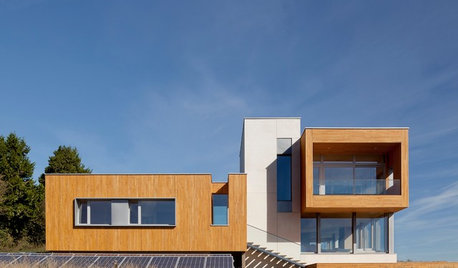

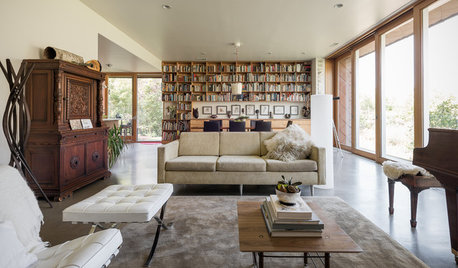
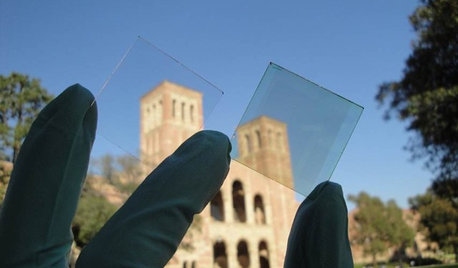
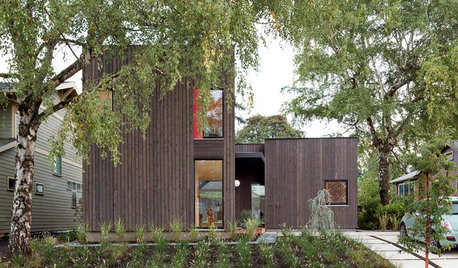

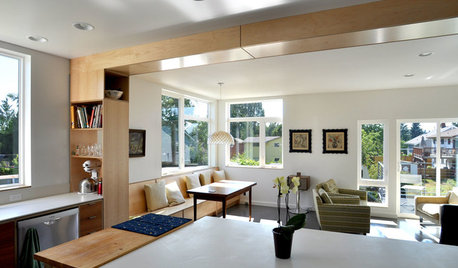
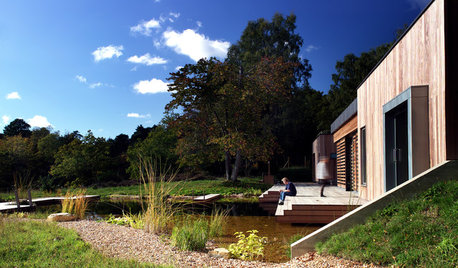


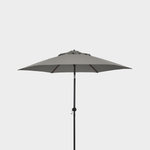
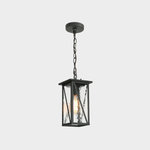



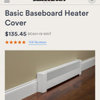
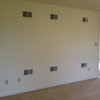
mtvhikeOriginal Author